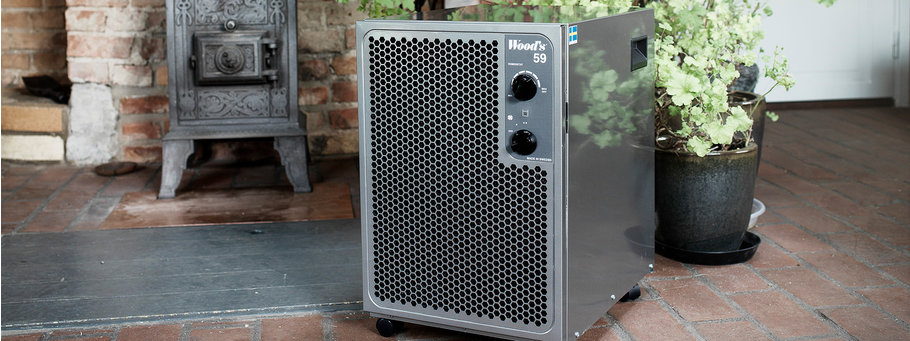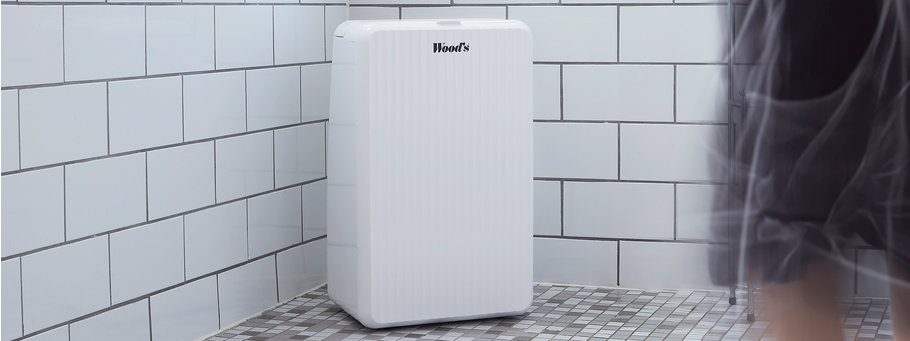Keeping the right level of humidity in a building is important. High levels of moisture in the air can come with all sorts of problems, including making your space a breeding ground mould and dust mites and causing problems with the structural integrity of your home.
Some homes only have moisture problems at certain times of the year, while other buildings need year-round help. Sometimes only one room or area of the home such as a basement or crawl space may be experiencing excess moisture. Whenever and however you experience problems with high humidity, it's essential that it's tackled quickly and effectively. This is where a dehumidifier comes in. A dehumidifier can help you bring the relative humidity of your home to comfortable and healthy levels for both its inhabitants and the building itself.
So, how can you tell if you need a dehumidifier? Below are some typical signs that you might need to invest in one.
Condensation
If you’ve noticed a misty fog on the inside of your windows, commonly known as condensation, it’s a tell-tale sign that there’s excess moisture in a room.
Besides being unsightly, condensation can cause damage to your window frames, window sills, and paintwork and sometimes worse.
Mould Spots
Mold shows up as little black spots on walls, ceilings, floors, or other locations within the home. If you see it, it means you've got moisture problems. The World Health Organisation recommends you get rid of mould as soon as it appears, searching for the cause of the problem which can sometimes be a leaky pipe or a broken gutter.
Allergies
Some people can develop allergies to mould and dust mites, both of which are problems caused by high humidity levels. We can see mould when it accumulates on surfaces, but the tiny spores can sometimes be invisible yet can trigger serious symptoms from coughing to severe breathing problems.
Dust mites, also a common allergen, thrive when there is a lot of moisture in the air. Using a dehumidifier reduces the essential moisture they need, causing them to die out. Dehumidifiers can help with this and some even have an optional HEPA filter (usually sold separately) to help deal with airborne irritants.
Musty Smells
Growing mould releases spores and other toxins which emit a musty or foul smell. This musty smell is a clear indicator that mould has started developing, particularly if it’s coming from an area which struggles with high moisture levels, such as cellars and basements. The smell should be investigated as soon as you encounter it. Once you’ve tackled the cause, a dehumidifier can help prevent this smell from coming back. Some dehumidifiers include a carbon filter to tackle musty odours and smells.
Water Marks on Your Walls or Ceiling
If you have wet patches on the walls of your home, this could be a sign you have moisture problems in your home. Find the source of the water stain as soon as possible, whether it’s leaking water from a burst pipe or a damaged roof. Once the cause has been identified and fixed, a dehumidifier can help ward off further damage.
A Relative Humidity Level of Over 60%
Probably the simplest way to tell if you need a dehumidifier is by measuring the relative humidity in a space. This will give you a straightforward answer to whether or not you need one. You can test this using a hygrometer. Hygrometers are cheap devices that can measure the humidity in your room precisely. The ideal relative humidity is around 50%. If it’s above 60%, it's likely you need a dehumidifier. On the opposite end, relative humidity below 40% means the air is too dry and you need to tackle this too.
If you’ve found any of these signs in your home or business, it's important to investigate further and work fast to tackle the problem.





